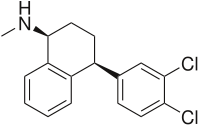 Antidepressant medications are prescribed by doctors to help relieve symptoms associated with major depression or anxiety. They are also used to help with bulimia, chronic pain or insomnia.¹ These medications work by increasing the activity of certain neurotransmitters in the brain. Increased reuptake of serotonin, norepinephrine and dopamine are found to help reduce the depressive and anxiety symptoms in many patients. Many who suffer from these symptoms have a lower baseline level of these neurotransmitters active in their brains.¹
Antidepressant medications are prescribed by doctors to help relieve symptoms associated with major depression or anxiety. They are also used to help with bulimia, chronic pain or insomnia.¹ These medications work by increasing the activity of certain neurotransmitters in the brain. Increased reuptake of serotonin, norepinephrine and dopamine are found to help reduce the depressive and anxiety symptoms in many patients. Many who suffer from these symptoms have a lower baseline level of these neurotransmitters active in their brains.¹
There are six classes of antidepressants currently prescribed by doctors today.
Selective serotonin reuptake inhibitors (SSRIs) include Prozac, Paxil, Luvox, Celexa and Zoloft. This is typically the first choice of treatment for major depression or anxiety problems.¹ SSRIs have milder side effects relative to other classes of antidepressants. These work by inhibiting the reuptake of serotonin neurotransmitters in the brain.
Serotonin and norepinephrine reuptake inhibitors (SNRIs) include Effexor, Cymbalta and Pristiq.¹ These work by inhibiting the reuptake of serotonin and norepinephrine neurotransmitters in the brain.
Norepinephrine and dopamine reuptake inhibitors (NDRIs) include Zyban and Wellbutrin. NDRIs are often prescribed because of their energizing effects, especially when combined with other antidepressants.¹ These work by inhibiting the reuptake of norepinephrine and dopamine neurotransmitters in the brain.
Noradrenergic and specific serotonergic antidepressants (NaSSAs) includes Remeron. It is the most sedative of all of classes of antidepressants and is often prescribes for insomnia or those who suffer from extreme anxiety symptoms.¹
 Cyclics include Elavil, Ludiomil and Norpramin. Cyclics tend to have more side-effects than newer drugs and is usually used if alternative classes are ineffective in treatment.¹
Cyclics include Elavil, Ludiomil and Norpramin. Cyclics tend to have more side-effects than newer drugs and is usually used if alternative classes are ineffective in treatment.¹
Monoamine oxidase inhibitors (MAOIs) is the very first class of antidepressants. They are effective in treatment but require a special diet and may not be suitable for every lifestyle.¹
The structure of Sertaline, an SSRI and the active medicinal ingredient in Zoloft, the most prescribed anti depressant in the United States.
References:
1. Camh.ca, (2014). CAMH: Antidepressant Medication. [online] Available at: http://www.camh.ca/en/hospital/health_information/a_z_mental_health_and_addiction_information/antidepressant_medication/Pages/antidepressant_medication.aspx [Accessed 11 Aug. 2014].
Image credit: Wikimedia Commons
© BrainMass Inc. brainmass.com July 25, 2024, 3:35 pm ad1c9bdddf